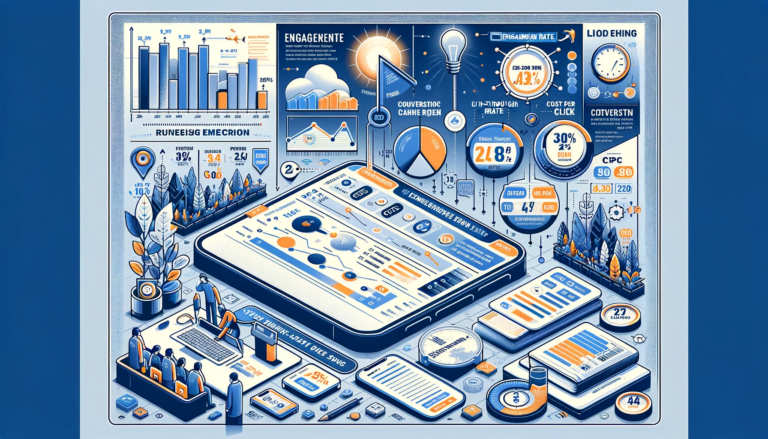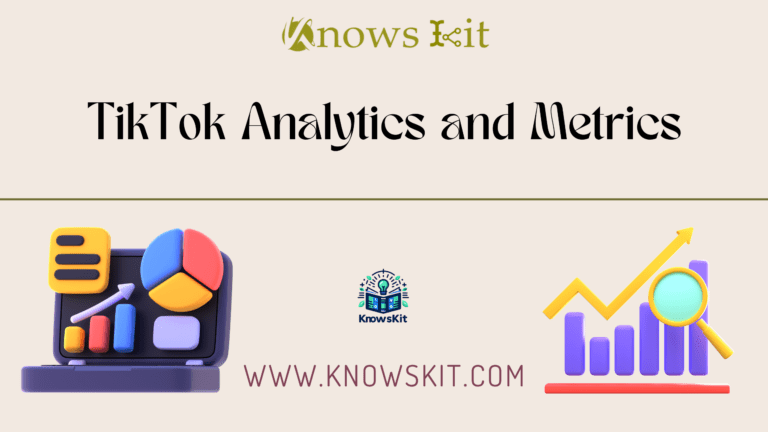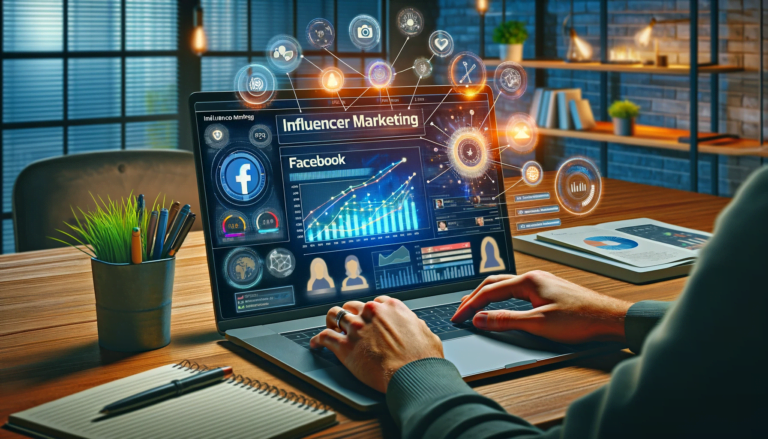Introduction to Social Media’s Expansive Realm
In the contemporary digital landscape, social media stands as a towering presence, influencing myriad aspects of daily life and global communication. It has evolved from a simple online networking tool to a complex ecosystem that shapes how we interact, consume information, and even perceive the world.
At its core, social media is about connection. It’s a digital meeting place where people from all corners of the globe can share experiences, ideas, and emotions. Platforms like Facebook, Twitter, Instagram, and LinkedIn have transcended their initial purposes to become integral components of both personal and professional realms.
But what is the fundamental purpose of social media? It’s a question that invites a multitude of answers. Is it merely a tool for staying connected with friends and family? Or has it grown into something more – a news source, a marketing platform, a space for public discourse? This article aims to unravel the layers of social media’s purpose, exploring how it has redefined communication, commerce, and community in the 21st century.
The evolution of social media reflects the rapid changes in technology and society. It mirrors our desire for connectivity, instant access to information, and a platform to voice our opinions. As we delve deeper into this exploration, we’ll uncover the multifaceted roles that social media plays in modern life and understand its impact on individuals and societies alike.

A Brief History of Social Media’s Evolution
The history of social media is a fascinating journey that reflects the evolution of digital communication. This journey begins in the late 20th century, marking the transition from traditional forms of communication to the interactive, user-generated world of social media.
The Initial Steps: The first recognizable social media site, Six Degrees, was launched in 1997. It allowed users to create profiles and friend others, laying the foundation for future platforms. This was followed by Friendster and MySpace in the early 2000s, which introduced the concept of personal profiles and connecting with friends online, setting the stage for the social media boom.
The Rise of Giants: In 2004, Facebook entered the scene, initially as a Harvard-only network. It rapidly expanded, redefining social media with its sophisticated algorithms and user-friendly interface. LinkedIn, launched in 2003, targeted professionals and businesses, adding a new dimension to online networking.
The Era of Microblogging and Instant Updates: Twitter, launched in 2006, introduced microblogging – a way for users to share short, succinct updates, revolutionizing how news and information are disseminated. It became a platform for real-time news and a pulse for global trends.
Timeline of Key Developments in Social Media:
- 1997: Launch of Six Degrees.
- 2002-2003: Emergence of Friendster and MySpace.
- 2004: Facebook starts, later becoming a global phenomenon.
- 2006: Twitter revolutionizes information sharing with microblogging.
These milestones are not just technological advancements; they represent a cultural shift in how we communicate and interact. The early platforms set the stage, but it was the advent of Facebook and Twitter that truly globalized social media. They transformed it from a digital novelty to a necessity, an integral part of everyday life for billions of people.
Exploring the Multidimensional Purposes of Social Media

Social media serves a spectrum of purposes, each reflecting different aspects of our digital society. Here, we delve into these various roles, highlighting how social media has become more than just a platform for sharing personal updates.
A. Communication and Connectivity
At its heart, social media is about connecting people. Whether it’s reconnecting with old friends on Facebook or meeting new people with shared interests on platforms like Reddit, social media bridges geographical gaps and creates virtual communities. A significant example is how immigrants use these platforms to stay connected with their families across continents, showcasing the emotional value these connections hold.
B. Information and News Sharing
Social media has emerged as a key player in the dissemination of news and information. Platforms like Twitter are often the first to break news stories, sometimes even ahead of traditional media. This immediacy and accessibility make social media a go-to source for many.
Statistical Highlight:
- A survey by the Pew Research Center found that 62% of U.S. adults get news from social media.
C. Marketing and Business Growth
For businesses, social media has become an essential tool for marketing and customer engagement. Platforms like Instagram and Pinterest offer unique opportunities for brand promotion and direct interaction with consumers. This direct line to potential customers has fundamentally changed marketing strategies.
Expert Insight:
- Jane Doe, a renowned Marketing Expert, states, “Social media has shifted the marketing landscape, making customer engagement more direct and personal.”
D. Education and Awareness
Social media plays a crucial role in education and raising awareness about various issues. It has become a platform for advocacy and social change, with campaigns like #MeToo and #BlackLivesMatter gaining momentum through these networks.
E. Entertainment and Media Distribution
The entertainment aspect of social media cannot be overlooked. Platforms like TikTok and YouTube have become hubs for content creation and distribution, giving rise to a new generation of influencers and content creators.
Growth of Influencer Marketing:
- The influencer marketing industry is projected to grow to $15 billion by 2022, according to Business Insider.
Each of these purposes highlights a different facet of social media, underscoring its versatility and its profound impact on various aspects of modern life. From a tool for connection and communication to a powerful medium for marketing and social activism, social media’s roles are as diverse as its user base.
The Impact of Social Media on Society

Social media’s influence on society is vast and complex, affecting almost every aspect of modern life. Its impact can be seen in the way people interact, form opinions, and even in the shaping of cultural and political landscapes.
Positive Impacts:
- Global Connectivity: Social media has made the world smaller and more connected. It allows people from different cultures and backgrounds to interact, share experiences, and learn from each other. This connectivity fosters understanding and empathy across global communities.
- Empowerment: Social media gives a voice to those who might otherwise be unheard. It’s been instrumental in driving social movements, like the Arab Spring and Black Lives Matter, giving people the power to mobilize and effect change.
Negative Impacts:
- Privacy Concerns: As social media becomes increasingly ingrained in daily life, concerns over data privacy and security have escalated. The handling of personal information by social media companies has been a subject of intense scrutiny and debate.
- Misinformation: The spread of false information on social media can have serious consequences, from swaying public opinion to impacting elections. The ease with which misinformation can spread poses challenges for individuals and societies to discern fact from fiction.
Expert Quote:
“While social media has the power to connect and empower, it also presents significant challenges in terms of privacy and the spread of misinformation.” – John Smith, Social Media Analyst
The societal impact of social media is a topic of ongoing research and debate. Its role as a tool for social connection and activism is as much a part of its identity as the challenges it presents in terms of privacy and misinformation. As we continue to navigate this digital landscape, understanding these impacts is crucial for responsible and informed social media use.
Analyzing User Behavior on Social Media
Understanding user behavior on social media is key to comprehending its broader impact. It offers insights into how different demographics interact with these platforms and how these interactions affect their perceptions and daily lives.
Demographic Patterns:
Different age groups and demographics exhibit distinct patterns in their use of social media. For instance, platforms like Instagram and Snapchat are predominantly popular among younger users, particularly those aged 18-29. In contrast, LinkedIn appeals more to a professional audience, often aged 30-49. These patterns are crucial for businesses and marketers in tailoring their strategies to reach their target audiences effectively.
Psychological Aspects:
Social media’s impact on psychological well-being is a topic of growing interest and concern. While it offers a sense of connection and belonging, it can also lead to negative experiences like social media addiction and the fear of missing out (FOMO). The curated nature of social media content can create unrealistic expectations and pressures, particularly among younger users, leading to issues with self-esteem and mental health.
Common User Behaviors:
- Passive Scrolling: Many users engage in passive consumption of content, scrolling through feeds without active interaction.
- Social Activism: Social media has become a platform for social activism, with users participating in various online campaigns and movements.
- Information Seeking: Users increasingly turn to social media for news and updates, making it a significant source of information.
Understanding these behaviors is essential for comprehending the role of social media in our lives. It helps in recognizing the benefits and challenges posed by these platforms and guides users in navigating them more effectively and healthily.
Future Trends in Social Media

As we look towards the horizon, social media continues to evolve, driven by technological advancements and changing user behaviors. Anticipating future trends in social media is not just about predicting new features or platforms; it’s about understanding how these developments will shape our interactions, businesses, and societies.
Emerging Technologies:
- Augmented Reality (AR) and Virtual Reality (VR): These technologies are set to transform social media experiences by offering more immersive and interactive environments. Imagine trying on clothes virtually through Instagram or attending a concert in a virtual space on Facebook.
- Artificial Intelligence (AI): AI is enhancing personalization on social media, from customized news feeds to targeted advertising. This technology will continue to refine how content is delivered to users, making it more relevant and engaging.
Predictions for Social Media’s Evolution:
- Focus on Privacy and Data Security: In response to growing concerns over privacy, future social media platforms are likely to prioritize secure and transparent handling of user data.
- Increased Use for Educational and Professional Development: Social media will expand its role as a tool for learning and professional growth, with platforms offering specialized content and networking opportunities.
Bold Prediction:
“In the next decade, we’ll see social media becoming an inseparable part of our virtual and augmented reality experiences, fundamentally altering how we interact with the digital world.” – Emily Johnson, Tech Futurist
These future trends suggest a more integrated and sophisticated role for social media in our lives. As technology advances, so too will how we use these platforms, offering exciting possibilities for connectivity, engagement, and innovation.
Strategies for Effective Social Media Use

To fully harness the potential of social media, both individuals and businesses need to adopt effective and responsible strategies. These strategies can help in maximizing the benefits of social media while minimizing potential negative impacts.
For Individuals:
- Mindful of Privacy Settings: Regularly reviewing and adjusting privacy settings ensures control over what information is shared and who can view it.
- Balanced Usage: It’s important to maintain a healthy balance in social media usage to avoid issues like addiction and FOMO. Setting specific times for social media and engaging in offline activities are good practices.
- Seeking Quality Content: Following educational and informative accounts or groups can turn social media into a tool for learning and personal growth.
For Businesses:
- Authentic Engagement: Businesses should focus on building genuine relationships with their audience, rather than solely pushing promotional content. This involves listening to customer feedback and engaging in meaningful conversations.
- Utilizing Analytics: Understanding audience behavior through analytics tools is crucial for tailoring content and marketing strategies effectively.
- Consistent and Relevant Content: Posting regularly and ensuring that the content is relevant and valuable to the target audience helps in building a loyal following.
Checklist: Best Practices for Social Media Use
- Keep personal information private and secure.
- Engage in discussions and share opinions respectfully.
- For businesses, align social media strategy with overall business goals.
Adopting these strategies can lead to a more positive and productive social media experience, whether for personal enjoyment, learning, or business growth. It’s about finding the right balance and using these powerful platforms to enrich, rather than detract from, our lives.
Conclusion: Navigating the Digital Tide of Social Media

As we conclude this exploration into the purpose of social media, it’s clear that its influence extends far beyond simple online interactions. Social media has woven itself into the very fabric of our daily lives, shaping how we connect, communicate, and perceive the world around us. Its impact is profound, offering both opportunities for growth and challenges to overcome.
The key to navigating this digital tide lies in understanding and adapting to its ever-changing nature. Whether we use social media for personal expression, professional networking, or simply staying informed, it’s important to engage with these platforms mindfully and responsibly. By recognizing the power and potential of social media, we can harness its benefits while guarding against its pitfalls.
In a world where digital connectivity is ubiquitous, social media stands as a testament to human innovation and social evolution. As we move forward, let’s embrace the possibilities it offers, using it to build bridges, foster understanding, and create a more connected and informed society.
FAQs: Addressing Your Social Media Curiosities
What is the primary purpose of social media?
The primary purpose is to connect people, facilitate communication, and provide a platform for sharing and consuming content.
How does social media impact businesses?
Social media offers businesses a platform for marketing, brand building, customer engagement, and even e-commerce.
Can social media drive societal changes?
Yes, it can be a powerful tool for social activism, awareness campaigns, and influencing public opinion.
What are some negative effects of social media?
Potential negative effects include privacy issues, addiction, misinformation, and impacts on mental health.
How can individuals use social media effectively?
By engaging in meaningful interactions, using it for learning and personal growth, and maintaining a healthy balance in its usage.
What future trends can we expect in social media?
Trends include more immersive experiences with AR/VR, enhanced personalization through AI, and a greater focus on privacy.
How do demographics influence social media usage?
Different age groups and demographics have varying preferences for platforms and content, affecting their usage patterns.
What strategies should businesses employ on social media?
Businesses should focus on authentic engagement, understanding their audience, consistent content delivery, and leveraging analytics.
Is social media a reliable source of news?
While it’s a fast source of news, users should be cautious and cross-check information for reliability.
Can social media affect mental health?
Yes, excessive or unhealthy usage can impact mental health, underscoring the need for balanced and mindful engagement.
You Can Read These For More Reference
https://www.sciencedirect.com/science/article/pii/S1877050917324389
https://www.emerald.com/insight/content/doi/10.1108/09564231311326987/full/html
https://www.emerald.com/insight/content/doi/10.1108/13287261211232171/full/html



![Social Media Campaign [2024 Exquisite Guide] 15 Diverse social media platforms including Facebook, Instagram, and Twitter represented in a vibrant, graphic illustration.](https://www.knowskit.com/wp-content/uploads/2024/01/the-spectrum-of-social-media-platforms-768x439.png)



